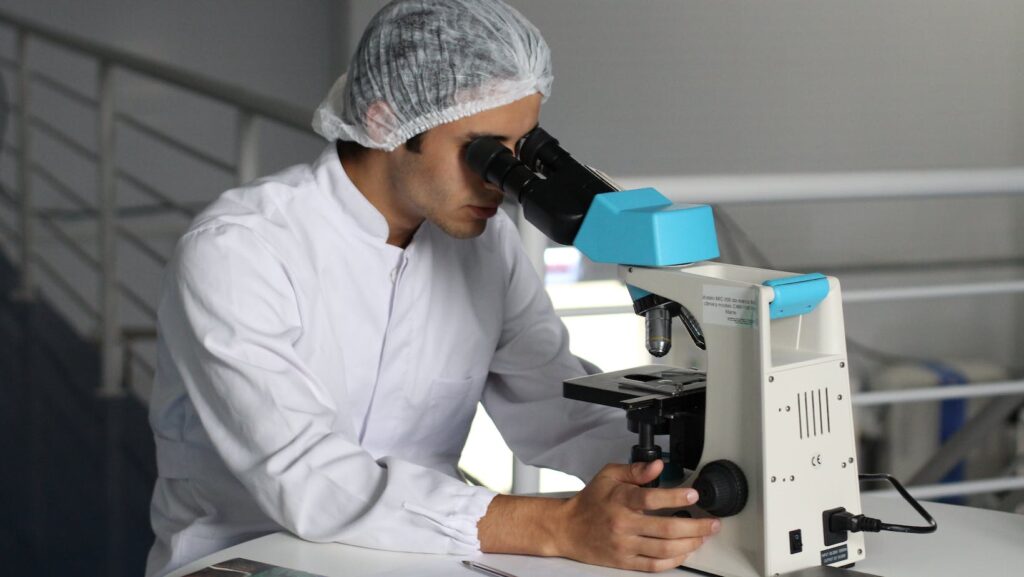
Two Distinct Processes: How Does Specialized Transduction Differ From Regular Lysogeny?
Specialized transduction and regular transduction are two distinct processes in molecular biology. As an expert in the field, I’ll shed light on the differences between these two mechanisms. Specialized transduction involves the transfer of specific genes from a donor cell to a recipient cell, while regular transduction involves the transfer of random genetic material. In this article, I’ll delve into the intricacies of specialized transduction, exploring its unique characteristics and how it sets itself apart from regular transduction.
How Does Specialized Transduction Differ From Regular Lysogeny?
Specialized transduction is a specific mechanism of gene transfer in bacteria that differs from regular transduction. In specialized transduction, certain specific genes are transferred from a donor cell to a recipient cell. This process occurs through the integration of a temperate bacteriophage into the host cell’s genome, allowing for the transfer of specific genetic material.
Definition of Specialized Transduction
Specialized transduction is a type of genetic transfer that involves the transfer of specific genes from a donor cell to a recipient cell. This process is mediated by temperate bacteriophages, which are viruses that infect bacteria. Unlike regular transduction, where random genetic material is transferred, specialized transduction is more targeted and specific.
Mechanism of Specialized Transduction
The mechanism of specialized transduction starts with the infection of a bacterium by a temperate bacteriophage. Temperate bacteriophages have the ability to integrate their DNA into the host cell’s genome, establishing a lysogenic state. During this lysogenic state, the phage DNA becomes a part of the host cell’s genetic material.
However, in specialized transduction, the integrated phage DNA can excise itself from the host cell’s genome. During the excision process, adjacent host genes can be mistakenly included in the phage DNA. This occurs due to the imprecise excision of the phage DNA, which may result in the capture of nearby host genes.
Once the phage DNA with the captured host genes is packaged into new phage particles, it can infect other bacteria. These phage particles can then transfer the captured host genes to the recipient cell during infection. The transferred genes can be integrated into the recipient cell’s genome, leading to the acquisition of new genetic traits.

How Does Specialized Transduction Differ from Regular Lysogeny?
Regular lysogeny is the process by which a temperate bacteriophage integrates its DNA into the host cell’s genome without the capture of adjacent host genes. In regular lysogeny, the integrated phage DNA remains dormant within the host cell’s genome until it is induced to enter the lytic cycle, where new phage particles are produced.
On the other hand, specialized transduction occurs when the integrated phage DNA excises itself from the host cell’s genome, capturing adjacent host genes in the process. This captured DNA is then packaged into new phage particles, allowing for the transfer of specific genes to recipient cells during infection.
Specialized transduction differs from regular lysogeny in that it involves the capture and transfer of specific genes from the donor cell to the recipient cell. This targeted gene transfer mechanism plays a crucial role in bacterial evolution, genetic variation, and the spread of antibiotic resistance genes among bacteria.
Mechanism of regular transduction
Regular transduction follows a two-step process: infection and transfer.
- Infection: The first step of regular transduction involves the infection of a donor cell by a bacteriophage. The phage attaches to the surface of the cell and injects its genetic material into the cell. The phage DNA then takes control of the cellular machinery, leading to the production of new phage particles.
- Transfer: As the new phage particles are assembled, they can incorporate fragments of the donor cell’s DNA. This occurs when the phage mistakenly packages the donor cell DNA instead of its own DNA into the phage particles. When these phage particles are released, they can infect recipient cells and deliver the transferred genetic material.
Regular transduction differs from specialized transduction in that it does not involve the capture and transfer of specific genes. Instead, it allows for the transfer of random genetic material, which can lead to the spread of a wide range of genetic traits throughout bacterial populations.
Conclusion
Specialized transduction and regular transduction are two distinct mechanisms of gene transfer in bacteria. Specialized transduction involves the targeted transfer of specific genes, while regular transduction transfers random genetic material.
Both specialized transduction and regular transduction are important mechanisms that shape bacterial genomes and contribute to the acquisition of new traits. Understanding these processes is essential for studying bacterial evolution and the spread of antibiotic resistance.





